Dressing up your dog can be fun to express its personality and keep it warm during colder months. However, finding the right size for your furry friend can be a challenge if you don't know how to measure it properly for clothes.
In this article, you'll learn how to measure a dog for clothes accurately, ensuring they are comfortable and stylish in their new attire. With these tips and tricks, your pup will be strutting its stuff in the perfect fit in no time!
Key Takeaways
- Measure the neck circumference snugly with a soft tape, using the two-finger rule for comfort.
- Wrap the tape around the widest part of the chest for chest girth.
- Measure the back length from the shoulder blades to the base of the tail for accurate clothing length.
- Use a distraction-free room and positive reinforcement to keep your dog calm and still while measuring.
- Re-check all measurements to ensure accuracy and opt for a larger size if measurements fall between sizes.
Pro Tips: Keep Your Dog Calm and Relaxed!
To get accurate measurements, ensure your dog stands still in a calm environment. This helps ensure you get precise measurements for a comfortable fit.
Start by choosing a distraction-free room where your dog can relax. Use treats or positive reinforcement to encourage your dog to stand still. A calm dog is easier to measure and less likely to fidget, which can lead to inaccurate measurements.
How to Measure a Dog for Clothes: Key Measurements to Take
When measuring your dog for clothes, you'll need to capture a few essential measurements.
Neck Girth
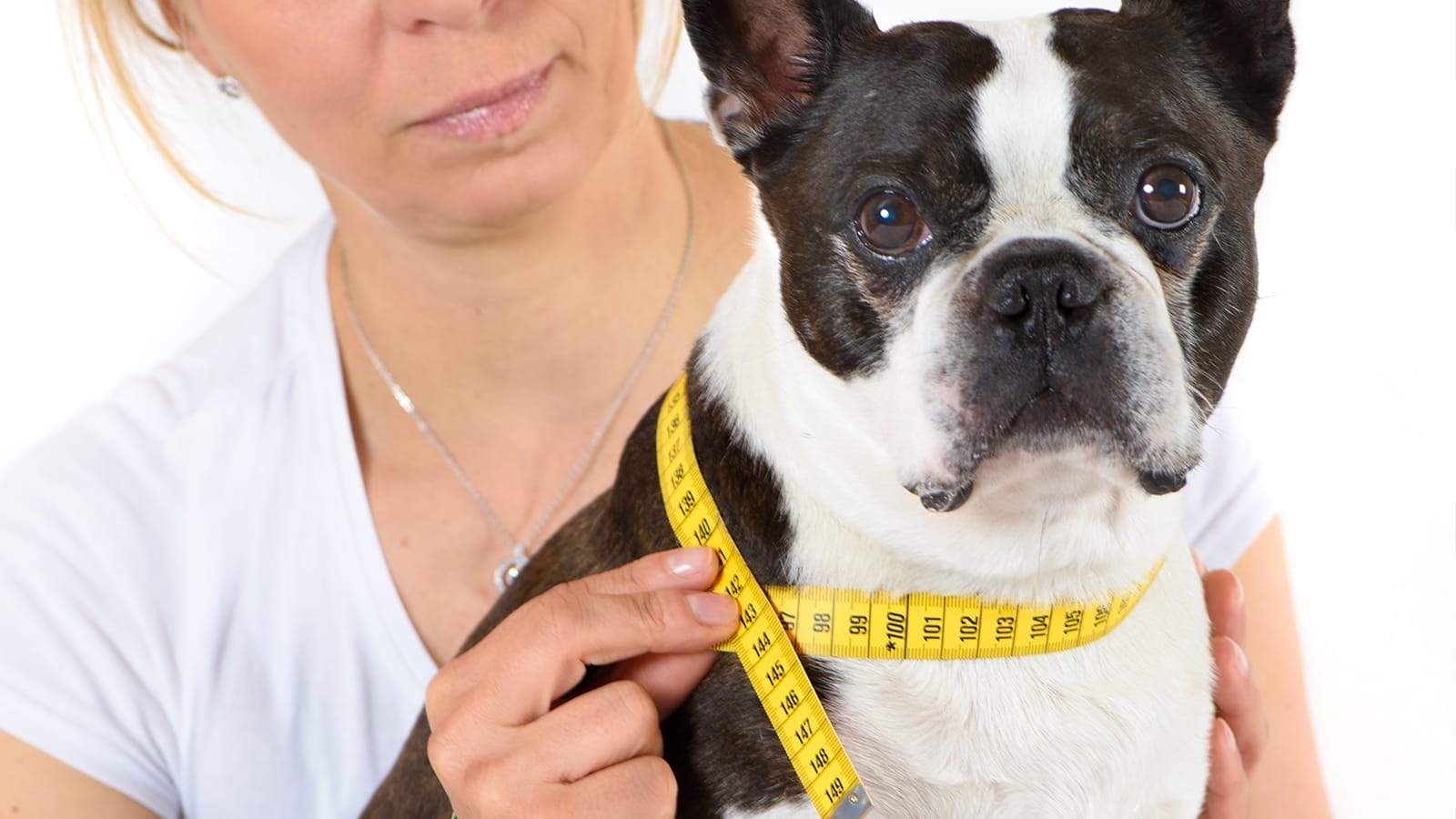
Start by comfortably wrapping a soft tape measure around your dog's neck, right where a collar would naturally sit. To ensure accurate sizing, ensure the measuring tape is snug but not tight. Use the two-finger rule: You should be able to slip two fingers between the tape and your dog's neck. This ensures the neck circumference is measured correctly and provides enough room for comfort.
Chest Girth
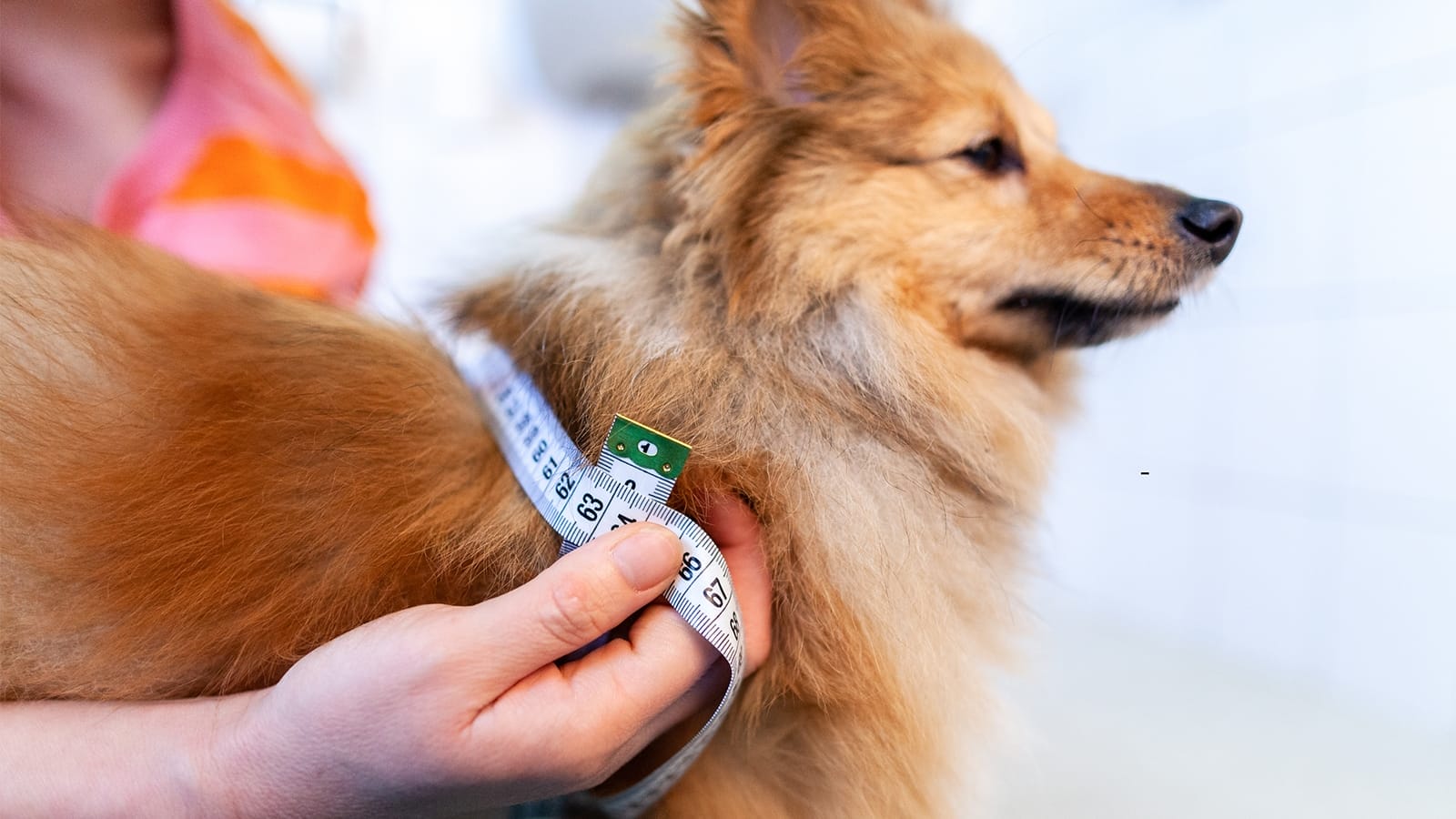
Measure your dog's chest girth by wrapping a soft measuring tape around the widest part of their chest, just right behind the front legs. Ensure you measure around this area accurately for a snug yet comfortable fit.
To achieve an accurate measurement, ensure you're able to fit two fingers between the tape and your dog's body. This allows room for your dog to breathe and move comfortably without the clothing being too tight.
Back Length/Body Length
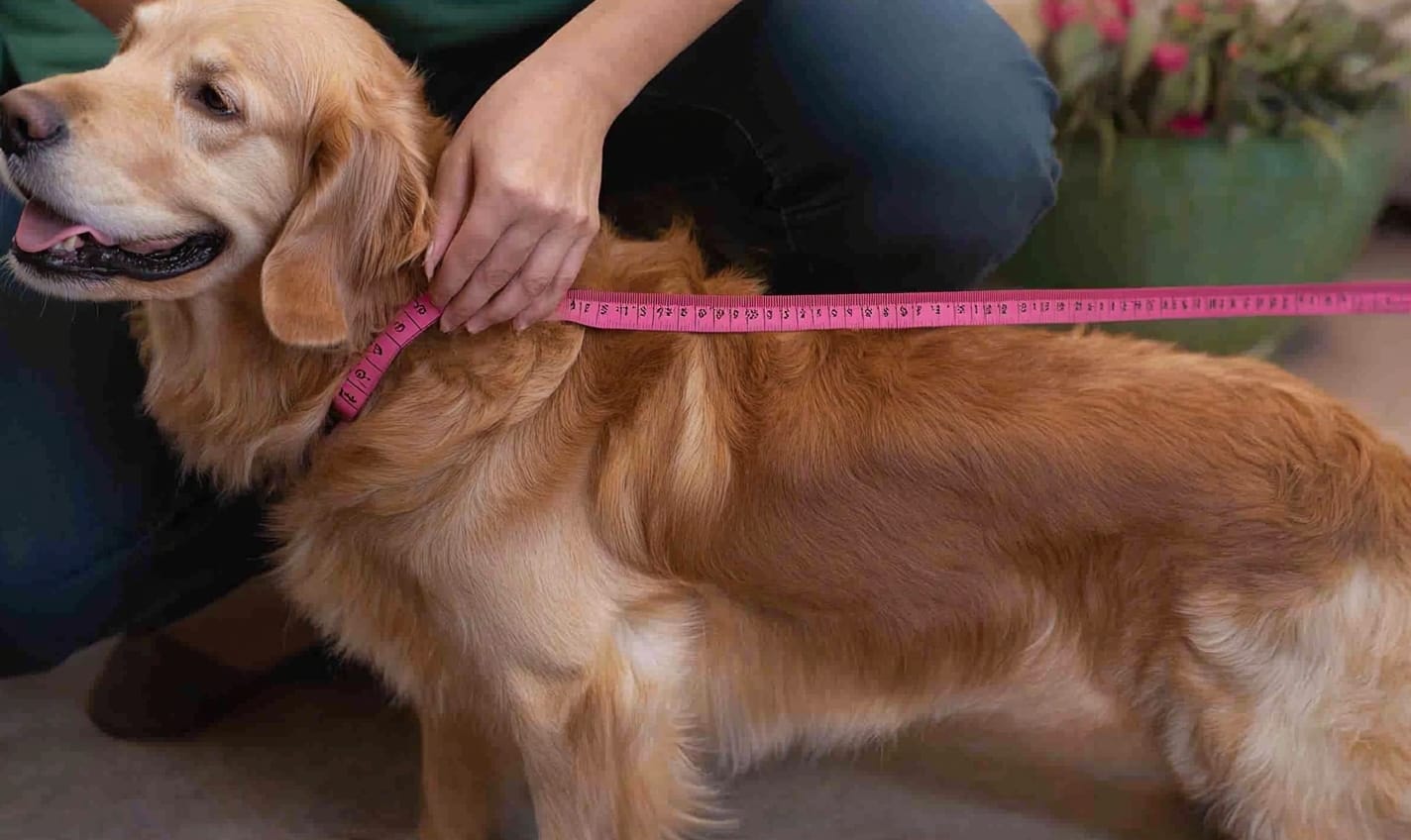
To measure the length of your dog accurately, place the measuring tape on the shoulder blades and extend it to the base of the tail. Ensure this measurement is precise to help your dog enjoy a well-fitted coat that allows freedom of movement and comfort.
Underbelly Length
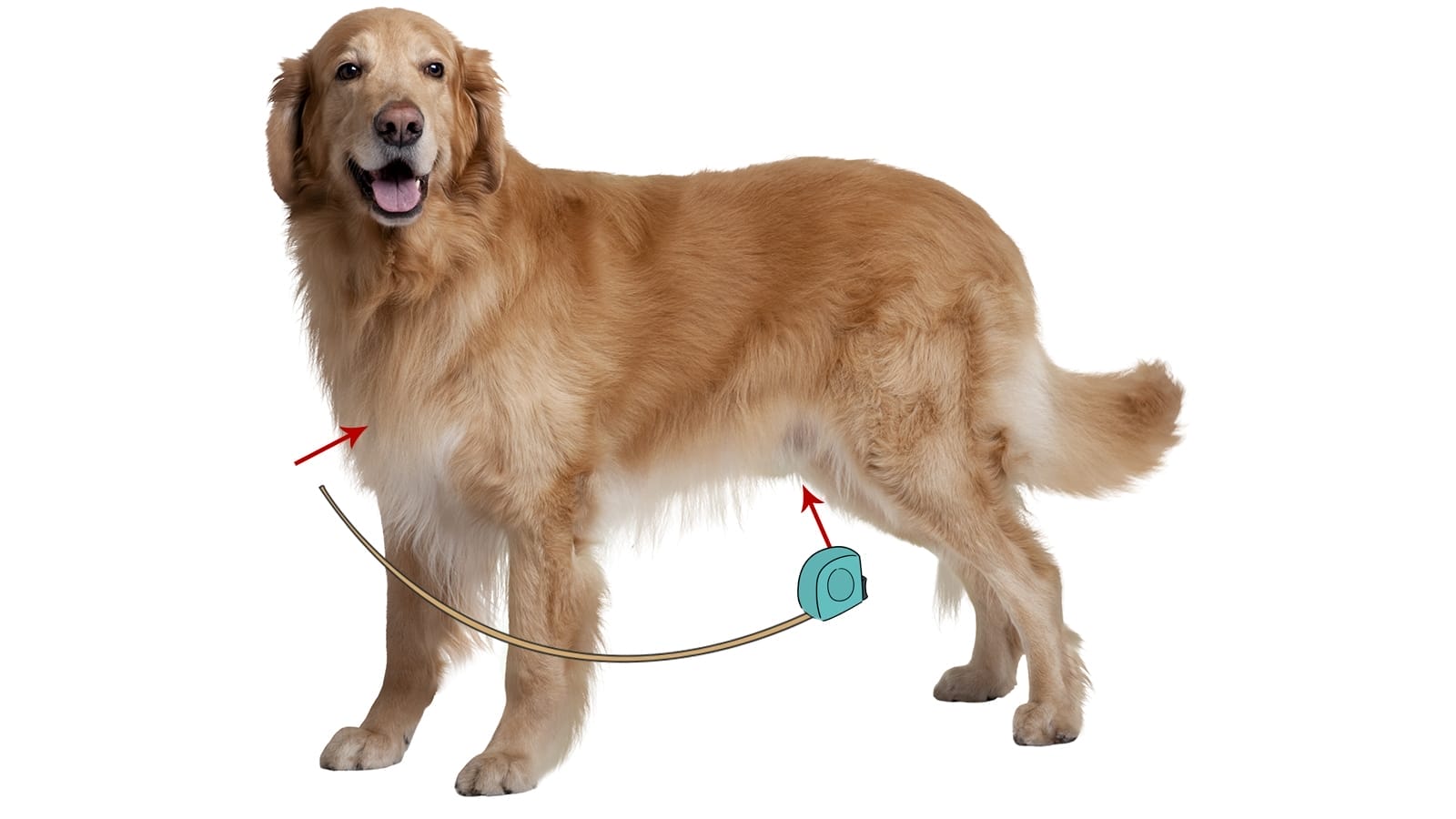
To get the right underbelly length, measure from one front leg to just in front of the back leg on the same side.
Proper underbelly length is essential for accommodating bathroom needs, ensuring your dog can relieve itself without soiling the outfit. Additionally, a well-fitted underbelly measurement helps prevent chafing, which can cause discomfort and irritation.
Waist Circumference

After capturing the underbelly length, focus on the waist circumference to ensure your dog's clothes fit snugly without causing discomfort.
Use a soft measuring tape to wrap around the narrowest part of your dog's torso, typically right in front of the hind legs. Make sure the tape is snug but not tight, allowing room for movement and comfort.
Leg Length (optional)
To measure a dog's leg length, start by having the dog stand on a flat surface. Use a tape measure and begin at the top of the leg where it joins the body. Measure down to the paw, ensuring the tape measure remains straight and follows the natural contour of the leg. Repeat the process for all four legs, as they can sometimes vary slightly in length.
Head Circumference (optional)
This head circumference measurement is optional but useful for ensuring that head accessories fit well and don't cause discomfort.
Begin by gently wrapping the tape around your dog's head, ensuring it covers the area just above the ears and under the jaw. Ensure the tape is snug but not tight, allowing your dog to move comfortably.
Tips for Accurate Dog Measurements
When measuring your dog for clothes, make sure they're standing naturally to get the most accurate results.
Don't pull the measuring tape too tight or leave it too loose to ensure a proper fit.
Always double-check your measurements to avoid any sizing errors.
Ensure Your Dog is Standing Naturally
Get accurate measurements by allowing your dog to stand naturally and comfortably while you measure. Dogs need to be relaxed to ensure precise measurements for fitting clothes. This natural standing posture helps you choose the right size for your dog's clothing.
Avoid Pulling the Tape Too Tight or Too Loose
Ensure the measuring tape is snug against your dog's body but not so tight that it causes discomfort. If the tape is too loose, you might end up with clothes that are too large. Avoid pulling the tape too tight or too loose to ensure a proper fit for your dog's comfort.
Double-Check Measurements for Accuracy
After you measure your dog using a soft tape measure, it's crucial to double-check measurements to ensure they're accurate. This means re-measuring the neck, chest, and back length to confirm you have precise measurements.
Recommended Fabrics for Dog Clothes from LonganCraft
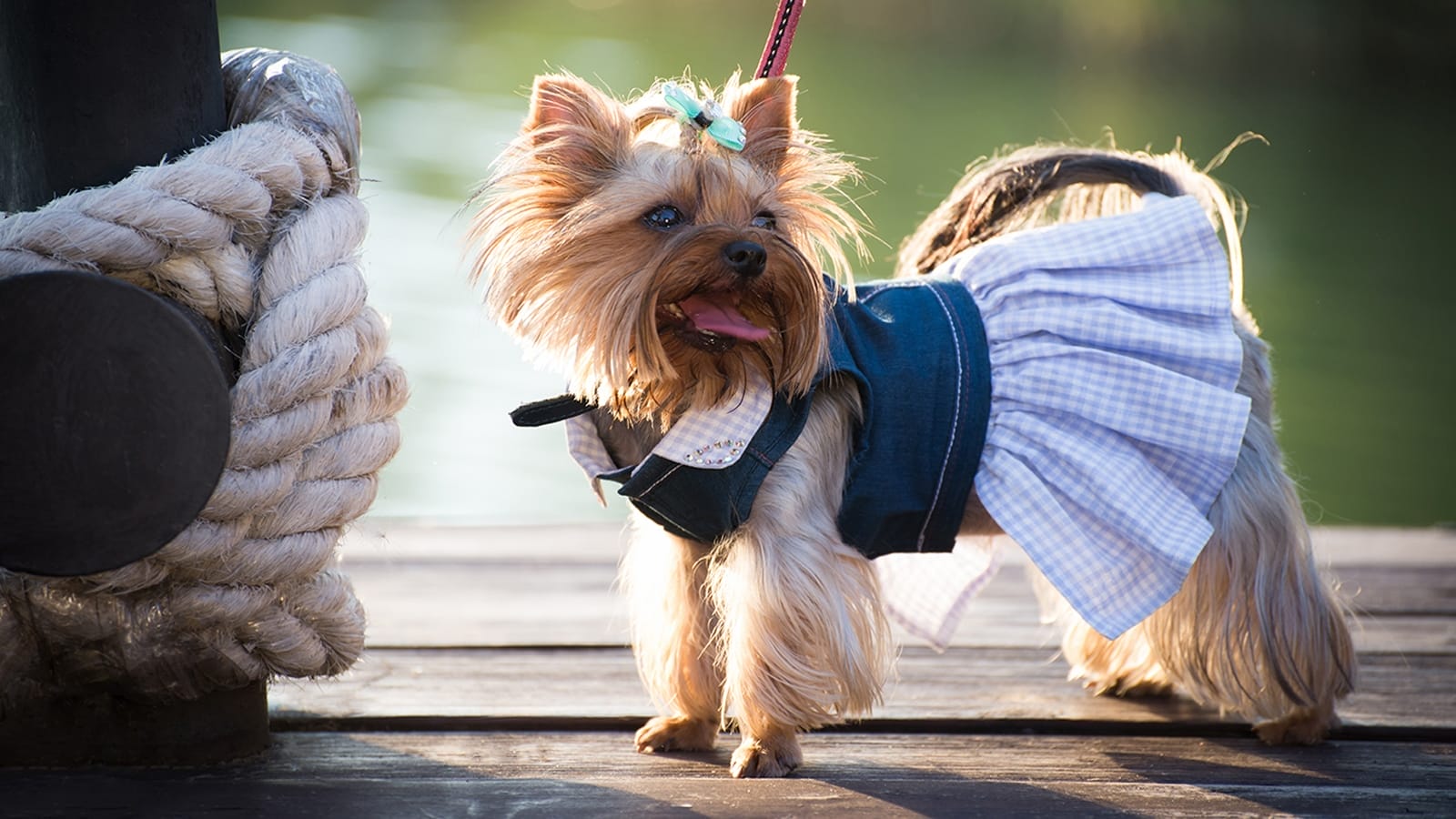
When it comes to choosing fabrics for your dog's clothes, LonganCraft recommends several great options.
Cotton
Consider cotton fabrics from LonganCraft for a soft, breathable option that's gentle on your dog's skin.
Cotton is hypoallergenic, making it ideal for dogs with sensitive skin. It's also versatile and can be used for various types of dog clothing like shirts, dresses, and bandanas.
Plus, LonganCraft's high-quality cotton fabrics are durable and machine washable, offering both comfort and convenience for your furry friend.
Fleece
Fleece is an excellent fabric for your dog's clothing because it's soft, warm, and moisture-wicking. When you're measuring your dog, consider fleece for its comfort and practicality.
This fabric is ideal for dog coats and various dog clothes, including sweaters and jackets. It's lightweight and breathable, ensuring your dog stays cozy without overheating. Plus, fleece dog clothes are easy to care for—just toss them in the washing machine, and they dry quickly.
Jersey Knit
Jersey knit fabrics, recommended by LonganCraft, are perfect for dog clothes due to their softness and stretchiness.
The stretchiness of these materials allows for a snug yet flexible fit, accommodating your dog's movements effortlessly. This makes jersey knit a practical choice, especially for active dogs.
Additionally, the fabric's softness ensures your pet feels comfortable wearing it for extended periods. It's also easy to wash and care for, further adding to its practicality.
Polyester
Polyester offers durability and water resistance. It's an excellent choice for your dog's clothing.
When choosing dog winter apparel, polyester's lightweight and breathable properties ensure your furry friend stays warm and comfortable.
Many dog apparel brands prefer polyester for its quick-drying and easy-care attributes. This fabric withstands frequent washing without losing shape or color. It's ideal for active dogs who need reliable and long-lasting clothing.
Nylon
Nylon is a fantastic choice for dog clothing, especially for outdoor activities, due to its durability and water resistance. This water-resistant fabric is perfect for keeping your dog dry during rainy walks or wet conditions. Nylon's quick-drying properties ensure that even if your dog gets wet, the clothes won't stay soaked for long.
Nylon is also lightweight and easy to clean. It's commonly used in dog coats, jackets, and raincoats, providing excellent protection from the elements. Additionally, nylon is popular for dog accessories like harnesses and collars because of its strength and durability, ensuring your dog stays secure and comfortable during any adventure.
FAQs
What Size Human Clothes Fit My Dog?
To find the right human clothes size for your dog, convert your dog's chest girth, neck girth, and back length measurements to the corresponding size using a size chart. Always check brand-specific sizing for accuracy.
How to Measure a Dog for a Costume?
To measure a dog for a costume, use a soft measuring tape. Measure the neck, chest, and back length. Refer to the size chart, consider the dog breed, and leave room for comfort. Double-check to ensure accuracy.
How Often Should I Re-Measure My Dog?
Dogs can gain or lose weight, and puppies grow quickly. To ensure a proper fit, re-measure your dog every few months or before purchasing new clothes.
What If My Dog Doesn't Fit Standard Sizes?
Some companies offer custom-made clothing options where you can provide your dog's specific measurements. This can be especially useful for breeds with unique body shapes.
Final Words
Now you know how to measure your dog for clothes! Remember to give your dog a treat to keep it calm and still. Take accurate measurements of the neck, chest, back, underbelly, and waist.
For an even better fit, consider measuring leg length and head circumference. Choose recommended fabrics from LonganCraft for comfort and style.
With these tips, you'll ensure your furry friend looks great and feels comfortable in their new clothes.
Happy measuring!
Learn more fabric knowledge and sewing tips on the Longan Craft Blog, and dive into the fabric world with Longancraft!

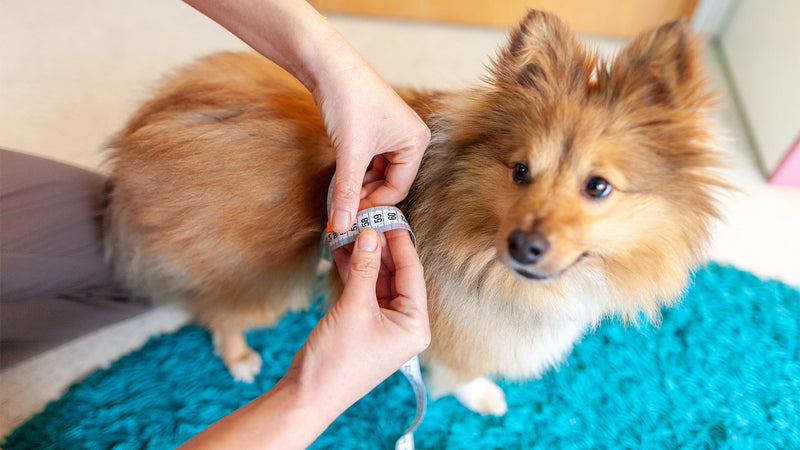
0 comments